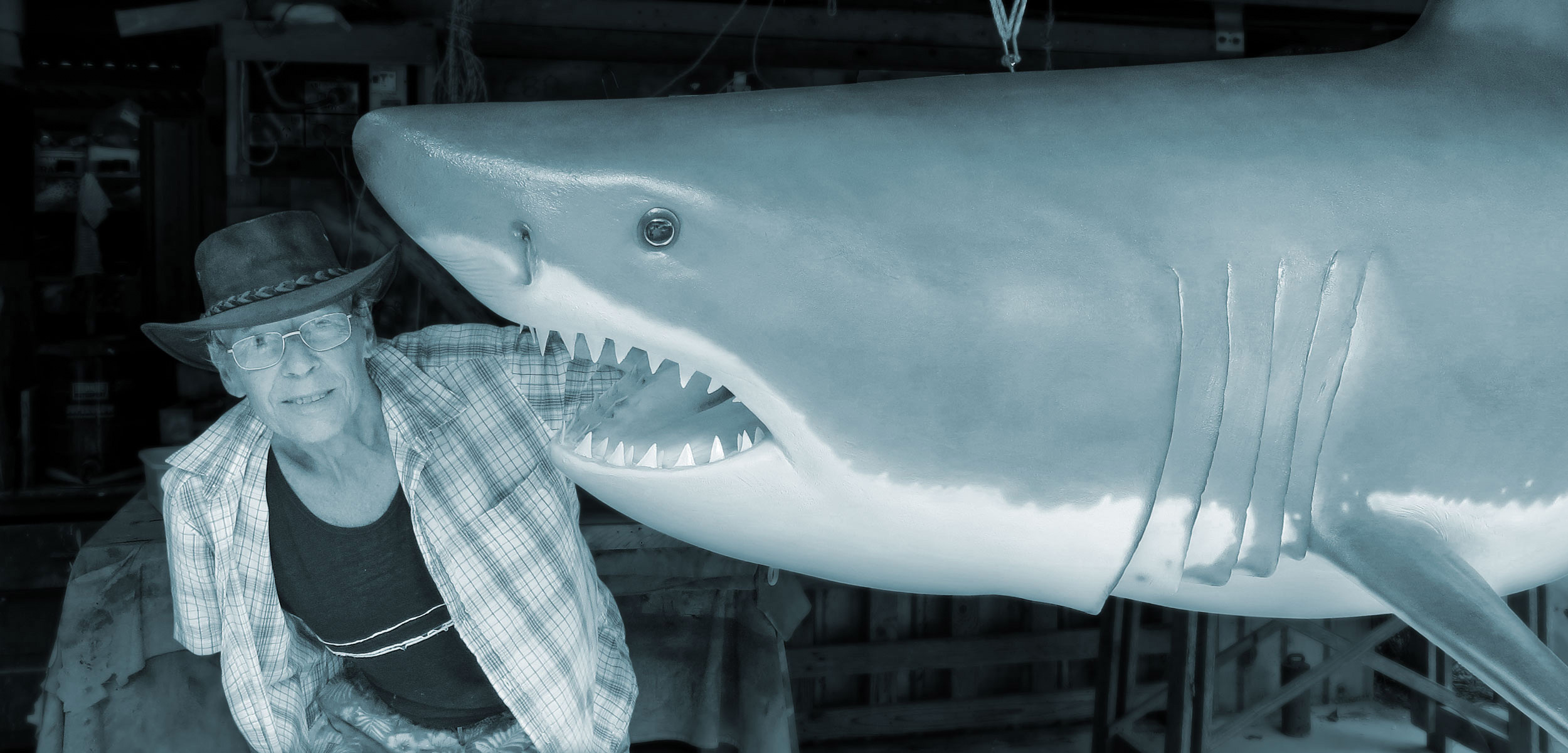Coastal Job: Marine Taxidermist
For this taxidermist, preserving an animal means sculpting, not stuffing.
Article body copy
Some people work in cubicles, others work in kitchens, but the most intriguing workplace of all may be the coast. Meet the people who head to the ocean instead of the office in our Coastal Jobs series.
Steve Mathews of Cairns, Australia, calls himself a marine taxidermist, but there are no discarded entrails or skin preservative in his workshop. It’s hard to create lifelike fish using traditional taxidermy—in which a real fish is prepared, stuffed, and mounted—mainly because the skin loses color when it dries out and a fish’s body doesn’t keep its natural shape. Instead, Mathews uses molds to create sculptural replicas of fish, often reproducing large species such as giant marlin and great white sharks.
In the 1970s, people were trying to mount large fish using traditional taxidermy with very limited success. They typically pulled a fish’s skin over a mannequin and then stuffed it with straw. Imagine having to skin a fish that’s five meters long. A marlin’s skin is 30 millimeters thick, so you’re probably looking at about 200 kilograms of skin. It’s a monumental task.
In 1978, a friend introduced me to a guy called Ian Pike who was taking molds of giant marlin so he could make models for anglers catching them on the Great Barrier Reef. I had a particular interest in marine life and had recently finished art school. Making three-dimensional pieces was more appealing to me than mainstream art, so I started helping with his projects.
The process of molding a fish is fairly involved. You want it to look nice on someone’s wall so I put some action into the poses. I first lay the fish in a bed of sand and pack the sand around it until it’s in a pose I like. If I’m doing a five-meter marlin, I need about 10,000 kilograms of sand.
I use fiberglass-reinforced polyester resin to take a mold of the animal. When it dries, my employees and I have to turn over the fish to build the second half, which can be quite a feat. It can take up to eight men to roll a large fish over, as it has to be done slowly to preserve the mold. The biggest fish I’ve molded is a 680 kilogram marlin.
I’ll typically spend a couple of weeks on each mount. I use the same fiberglass material as the mold to build the replica. Skin detail is captured by the mold but I repair damaged areas with a stippling brush and thick resin. From there, I paint the fish model. I use automotive paints since they’re really durable. I also add metallics and tints and use a whole range of airbrushes.
I’ve just made a new build of a 450-kilogram great white shark caught in 1982 by Greg Norman, the famous golfer. Some of my other clients are commercial fishermen. If they catch something unusual, they’ll bring it to me to reproduce. Regular people who like to go fishing on the weekend come to me with special fish, too. Apart from that, I do quite a bit of work for the Great Barrier Reef park authority and museums. I’ve made a giant marlin sculpture for the Smithsonian Institution in Washington, DC, and one for the Louvre in Paris, France.
I think it’s a shame to go out and kill wild animals. Probably 70 percent of the work I do now is from stock molds. I keep about 1,200 molds from different species in a whole range of sizes. Some people are still in the mindset that they want a trophy to hang on their wall. But I encourage people to catch and release. If somebody gives me a fish’s dimensions, there is a 90 percent chance I can match it for them and I don’t need the fish itself.
Now I’m working on a dream project to enter in a wildlife artist competition. I’m trying to re-create flying fish surrounded by waves. The main challenge is trying to suspend the fish models in the replica of the wave while it’s in a liquid state, before the resin sets. The chances of failure are high, but my goal is to create something nobody has ever made before. Something that seems impossible.

